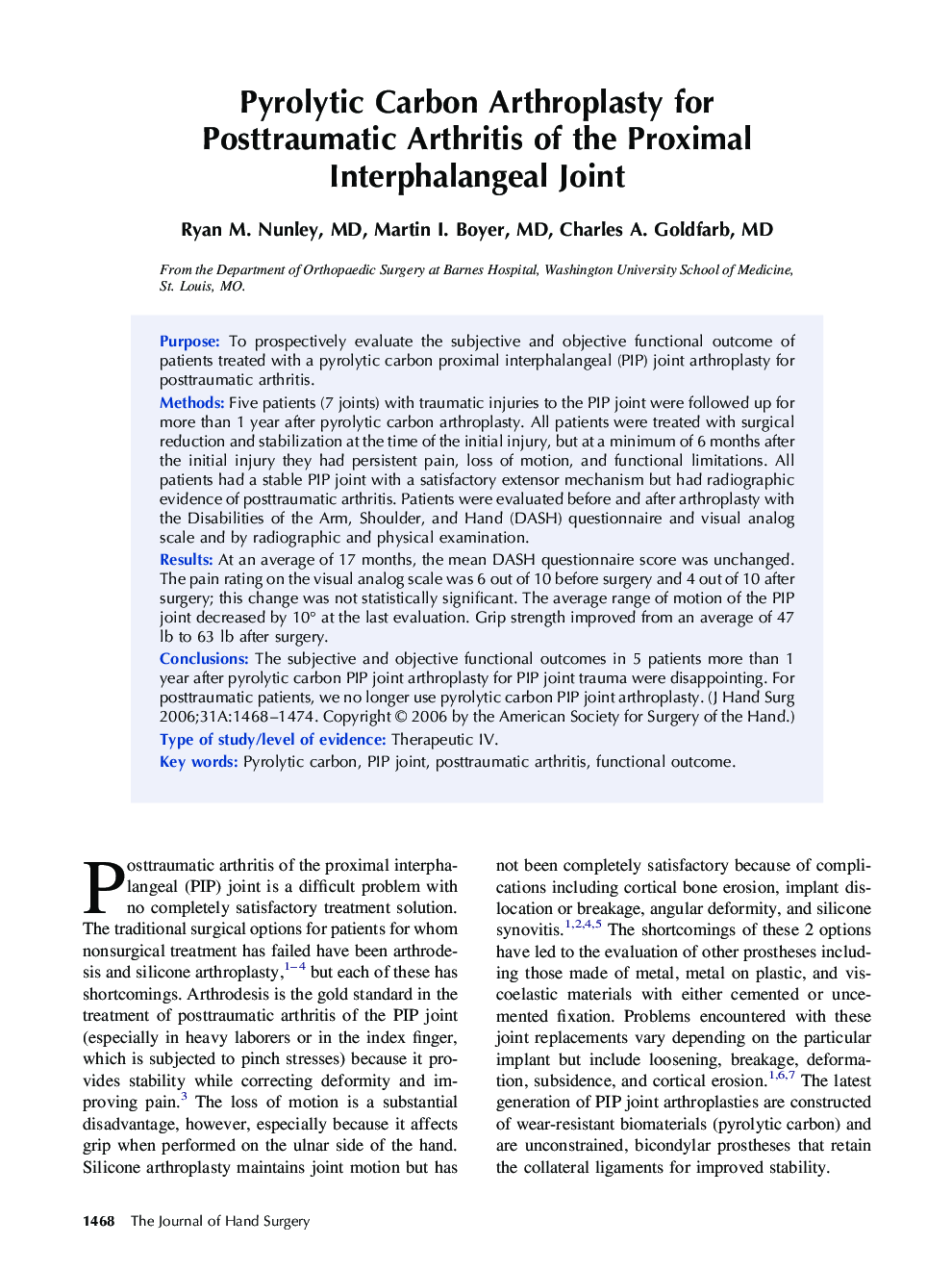| Article ID | Journal | Published Year | Pages | File Type |
|---|---|---|---|---|
| 4069130 | The Journal of Hand Surgery | 2006 | 7 Pages |
PurposeTo prospectively evaluate the subjective and objective functional outcome of patients treated with a pyrolytic carbon proximal interphalangeal (PIP) joint arthroplasty for posttraumatic arthritis.MethodsFive patients (7 joints) with traumatic injuries to the PIP joint were followed up for more than 1 year after pyrolytic carbon arthroplasty. All patients were treated with surgical reduction and stabilization at the time of the initial injury, but at a minimum of 6 months after the initial injury they had persistent pain, loss of motion, and functional limitations. All patients had a stable PIP joint with a satisfactory extensor mechanism but had radiographic evidence of posttraumatic arthritis. Patients were evaluated before and after arthroplasty with the Disabilities of the Arm, Shoulder, and Hand (DASH) questionnaire and visual analog scale and by radiographic and physical examination.ResultsAt an average of 17 months, the mean DASH questionnaire score was unchanged. The pain rating on the visual analog scale was 6 out of 10 before surgery and 4 out of 10 after surgery; this change was not statistically significant. The average range of motion of the PIP joint decreased by 10° at the last evaluation. Grip strength improved from an average of 47 lb to 63 lb after surgery.ConclusionsThe subjective and objective functional outcomes in 5 patients more than 1 year after pyrolytic carbon PIP joint arthroplasty for PIP joint trauma were disappointing. For posttraumatic patients, we no longer use pyrolytic carbon PIP joint arthroplasty.Type of study/level of evidenceTherapeutic IV.
